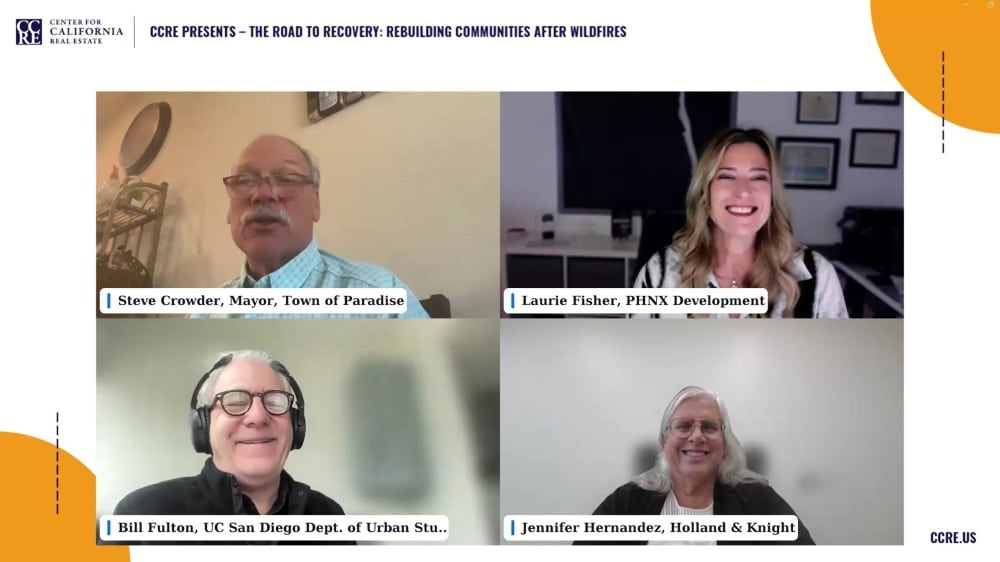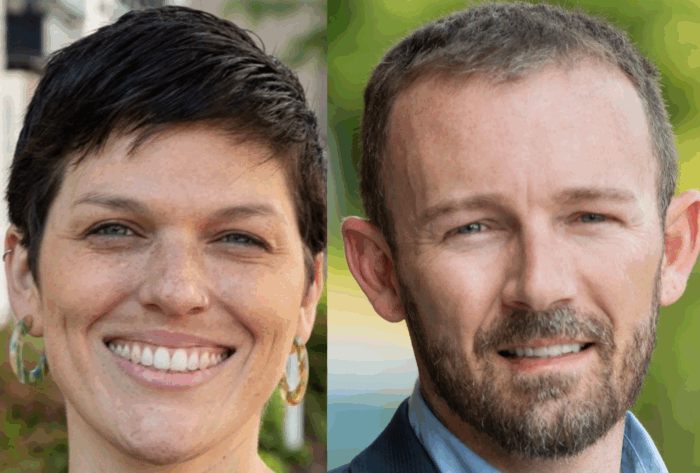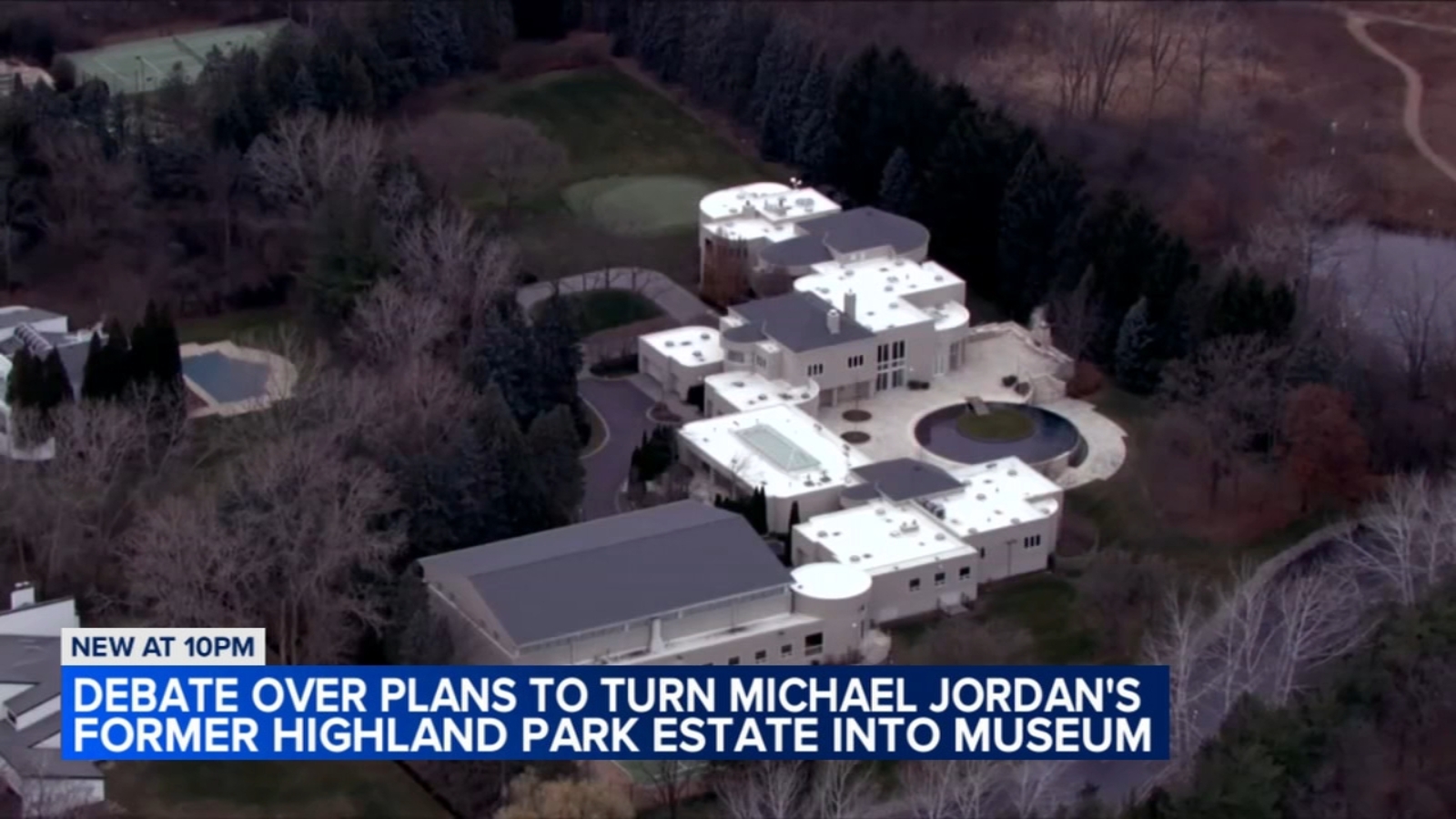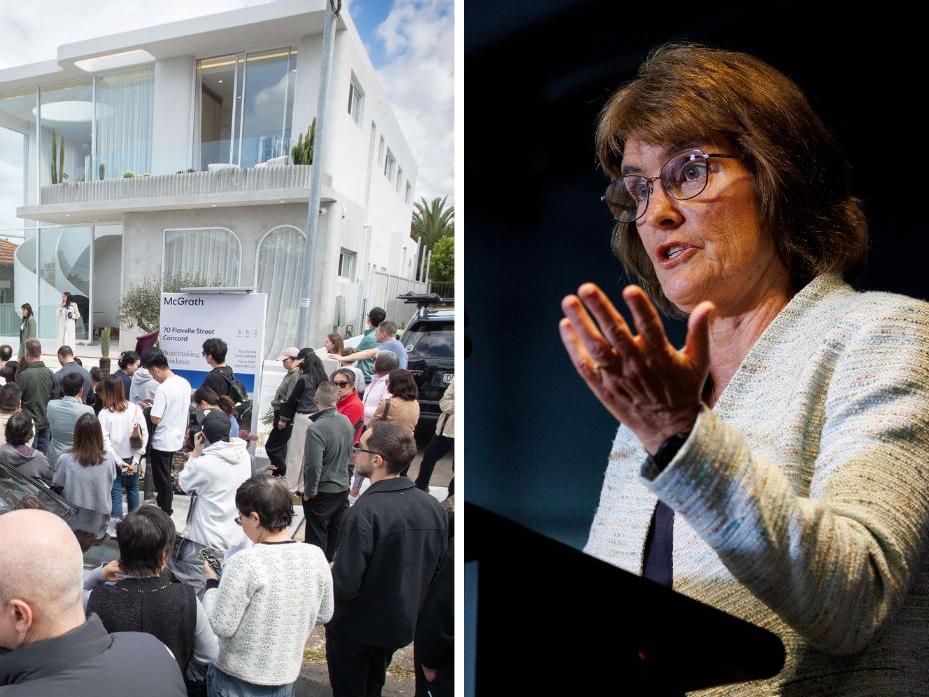I
n the aftermath of the 2018 Camp Fire, Paradise, California's Mayor Steve Crowder painted a stark picture of his town's recovery prospects. Speaking at an expert panel hosted by the Center for California Real Estate (CCRE), he estimated that it would take two decades to rebuild and recover from the devastating blaze.
The panel, "Rebuilding Communities After the Wildfires," brought together key stakeholders to share insights on policy, innovation, and consumer tips essential for guiding the recovery effort in Southern California. Moderated by Bill Fulton of UC San Diego's Department of Urban Studies and Planning, the discussion featured non-combustible building expert Laurie C. Fisher, environmental land use attorney Jennifer Hernandez, and Mayor Crowder.
A major concern is the rising cost of rebuilding, driven by a shortage of construction workers, material scarcity, and insurance costs. "We were building houses at $175 to $200 per square foot before the fire," Mayor Crowder noted. "Overnight, we went to $300 to $350 per square foot." This surge in prices has created a new reality for homeowners, with the median price in Paradise now standing at $460,000 – unaffordable for many residents.
Laurie Fisher highlighted another factor contributing to increased costs: tariffs on materials like lumber, steel, and aluminum. "Almost all our lumber comes from Canada," she said, "and we've seen a 20-30% increase in lumber costs." Mayor Crowder emphasized that progress is slow, with only about 33% of homes rebuilt so far – approximately 350 per year.
Jennifer Hernandez stressed the importance of considering equity and affordability when planning for rebuilding. She argued that California's focus on urban density won't yield affordable housing statewide. "The only solution that works for housing is building higher density," she said, "but a Terner Center study showed this doesn't pencil out in most areas."
Hernandez advocated for building along urban boundaries and into open space to mitigate impacts on the community. She also emphasized the need for urban and building standard compliance to create fire-safe communities.
The panelists called for innovation in construction processes and materials, citing the lack of progress in this area despite new fire-hardening products and legislative efforts. "We still deliver construction materials to sites the same way we did 70 years ago," Bill Fulton noted, referencing a recent National Housing Supply Summit.
Laurie Fisher emphasized the need for standardization in fire-resistant building materials, particularly for insurance purposes. Mayor Crowder urged homeowners to take proactive measures to mitigate fire risk, such as home hardening and defensible space creation.
For individual homeowners, Fisher recommended taking steps like blocking points of entry with screens and replacing wood fencing with non-combustible options. He also suggested that these actions will become essential selling points for homes in the future, affecting property values and insurance costs.













